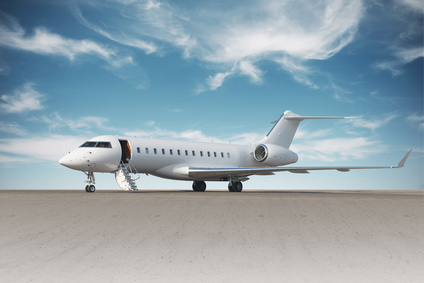Quebec Inc’s red ink

Taxpayers are likely to lose big by backing Bombardier’s CSeries program, as they usually do when government takes a flyer in business
The Quebec government has just announced that it is going to invest $1.315 billion in a limited partnership with Bombardier in order to acquire a 49 per cent stake in the new CSeries aircraft program.
Quebec taxpayers would be well advised to return to their seats and fasten their seatbelts, because this a very high risk investment. Experts are in general agreement that airlines have ordered far too many planes in recent years, and that these investments could be threatened in case of an economic downturn.
Although it’s too soon to pass judgment on this particular bailout plan, Quebec’s past experience with “state capitalism” is hardly encouraging. Becoming part-owner of an aircraft manufacturing program for a plane which has yet to see the light of day, if it ever does, and which seems to interest no other manufacturer, is in fact perfectly emblematic of the province of Quebec’s public investment in private companies.
Among the many failures of this kind of interventionism, some will recall the General Motors plant in Boisbriand. In 1987, the provincial government of Robert Bourassa and the federal government of Brian Mulroney jointly signed off on a $220-million interest-free loan, reimbursable starting in 2017. Alas, the factory closed its doors on Aug. 29, 2002. If this money had simply been invested in the market, it would have earned around 10 per cent annually.
Others will remember the Gaspésia fiasco, which saw the government sink $145 million in the Chandler pulp and paper company in the early 2000s. Another example is the Electrolux plant in l’Assomption, which closed despite a financial contribution of nearly $5 million from the Quebec government, less than half of which was ever recovered.
Already back in 1993, former Caisse de Dépôt et Placement manager Pierre Arbour estimated the total cost of the failed attempts to save Steinberg and Brascade-Noranda, as well as the difficulties of Domtar around that time, at $1.7 billion. Through its investments in private companies, the Quebec government has a long history of financial fiascoes. Whereas politicians do not hesitate to highlight the number of jobs concerned every time they advance funds, all of these botched projects have been costly for taxpayers, without actually saving any jobs in the end.
Of course, in certain cases, the assistance seems to have worked. There is the case of Paccar, for instance, in Ste-Thérèse, which benefited from a $23.5-million loan from Quebec and Ottawa. In other cases, the government recovered the sums invested, like when Hyundai had to close its plant in Bromont and reimbursed the $50 million of public assistance it had received.
Quebec isn’t the only Canadian province that has made shoddy investments. In 1987, Newfoundland and Labrador invested in the Sprung Greenhouse, with high-tech hydroponics, a debacle which cost taxpayers $22 million. British Columbia’s $450-million fast ferries scandal also deserves a mention.
The federal government, which Bombardier hopes will also invest in its CSeries program, already has a bad history with airplane investments. The world’s first photographic survey plane was ordered in 1926 by the Department in National Defense. The Canadian Vickers Velos was a float plane that couldn’t fly… or float, for that matter. The project was abandoned after the prototype sank twice. Royal Canadian Airforce Flight Lieutenant R.S. Granby wrote that “it is considered that this aircraft is most unsuitable for any operation.” It has been nominated as the ugliest plane in the world, and was apparently known as “The Dead Loss” by its factory workers.
Bombardier searched for private partners within the industry, but was unable to conclude an arrangement with Airbus, Boeing, or other manufacturers. This doesn’t seem to be due to a lack of liquidity, either; Airbus launched a one-billion-euro share buyback program last week. This should have sent a strong signal regarding the actual commercial potential of the CSeries planes. The government is investing in a product on which the private sector has already rendered its verdict, and for which there is heated competition. Besides the already much more popular Boeing and Airbus models in the same category, the Commercial Aircraft Corporation of China unveiled Monday morning a jet plane that will compete directly with the CSeries. If taxpayers had had the choice, it is very likely they would have chosen a less risky investment.
Bombardier would also have made less risky choices, if not for its longstanding relationship with the political authorities. Since its management knows very well that the Quebec government will never let the company go bankrupt, it can allow itself the luxury of gambling on much riskier operations and products than it otherwise would. Why be prudent when it’s clear that taxpayers will be the ones picking up the tab should things go wrong?
If the Quebec government wants to turn the page on financial fiascoes, it will sooner or later have to put an end to its subsidies of big business. Which means that someday, Bombardier will have to learn how to fly with its own wings.
Mathieu Bédard is Economist at the Montreal Economic Institute. The views reflected in this op-ed are his own.

